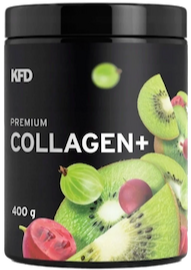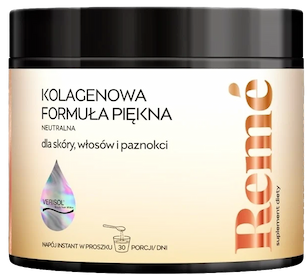Different types of collagen explained (How many are there?)
Learn about the key types of collagen, their roles in skin, joints and the whole body


Learn more about our editorial process
.

Learn more about our editorial process
.

Learn more about our editorial process
.

Learn more about our editorial process
.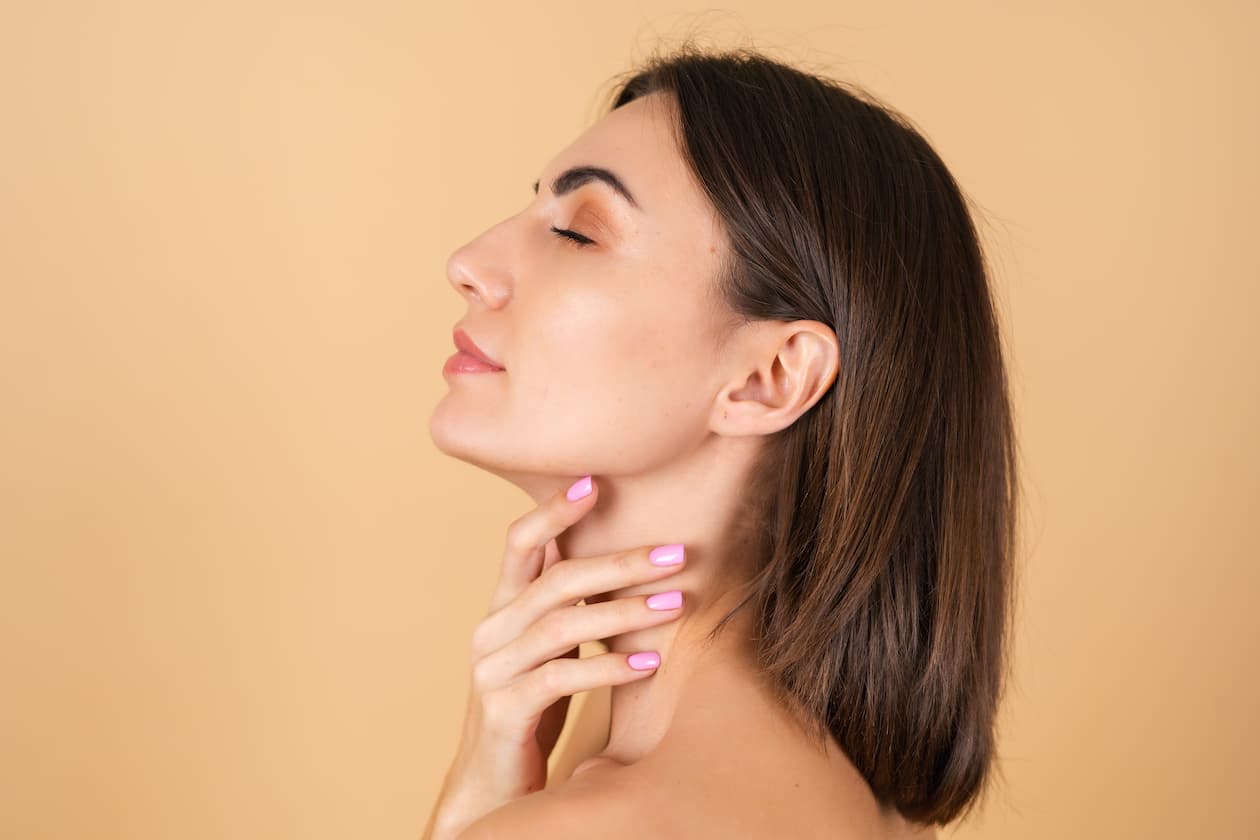
Why you can trust us
Articles on Natu.Care are written based on scientific research, data from government websites and other reliable sources. The texts are written in cooperation with doctors, nutritionists and other health and beauty experts. Articles are reviewed before publication and during significant updates.
.Learn more about our editorial process
.Information about advertisements
Content on Natu.Care may contain links to products from the sale of which we may receive a commission. When creating content, we adhere to high editorial standards and take care to be objective about the products discussed. The presence of affiliate links is not dictated by our partners, and we select the products we review ourselves completely independently.
.Learn more about our terms and Conditions
.Till 30 years ago there were about 15 types of collagen. Now there are 28, and tomorrow there could be 54 - you never know. The types of youth protein are still under the magnifying glass of experts, so new ones are being discovered over the years.
But don't worry, only a few of them are relevant for you, especially type I. That is why, together with Ilona Krzak, M.D. in pharmacy, I will present the most important information about them.
And don't worry.
From this article you will learn:
- How many types of collagen there are in the body. .
- What are the main types of collagen. .
- Which types of natural collagen are important for the dermis and joints. .
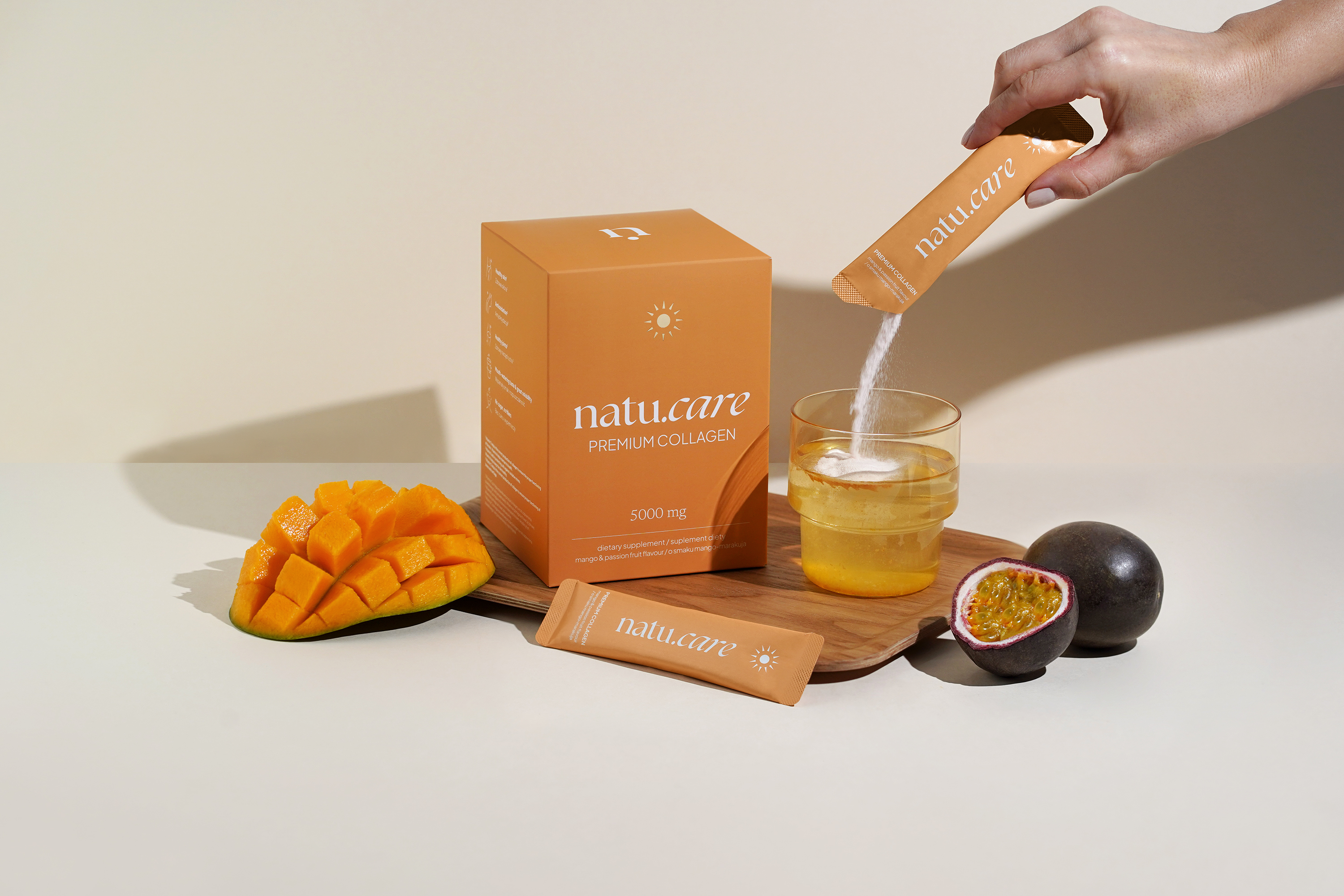
Sprawdź, za co pokochały go tysiące klientek Kolagen Premium (5000 mg) mango-marakuja -15% z kodem BLOG15
Natu.Care Kolagen Premium 5000 mg, mango-marakuja
Natu.Care Kolagen Premium dla zdrowia stawów, skóry, paznokci i włosów. Najlepsza przyswajalność. Optymalna dawka 5 000 lub 10 000 mg. Przebadany przez niezależne laboratorium.
Zobacz więcej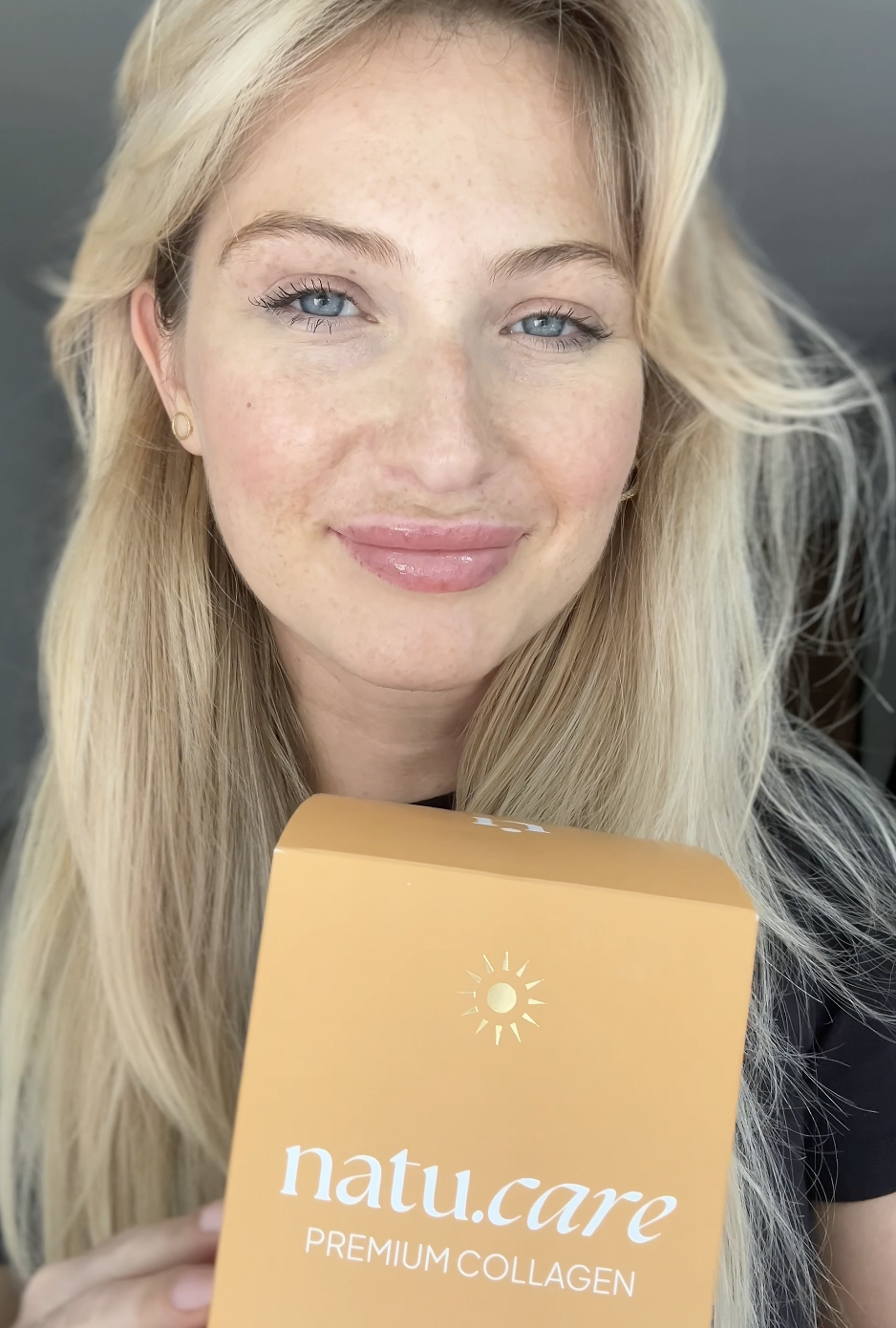
Wybrałam kolagen Natu.Care, ponieważ miał super opinie – a to było dla mnie bardzo ważne! Odkąd go stosuję, moja skóra znacznie się poprawiła i jest nawilżona, a na głowie pojawiły się nowe "baby hair".@Kasia S.
See also:
.
- The best collagen on the market .
- Best facial collagen
- Best collagen for wrinkles
- Best collagen for skin
- Best collagen for nails
- Best collagen for hair
- Best collagen for joints
- Best collagen for bones
- Best collagen for tendons
- Best collagen for cellulite
- Best collagen for acne
- Best collagen for stretch marks
- Best collagen for scars
How many types of collagen are there in the body?
.
To date, scientists have identified 28 types of collagen in the human body. However, this is not the end of the story, due to the complexity of the function and structure of collagen protein, it is likely that more types will be discovered in the future. The most important types of collagen are type I, type II, type III, type IV and type Vand.
Collagen type I
.
Collagen type I is a structural protein that is the most important collagen component in the human body. It accounts for as much as 90% of the total collagen pool. The uniqueness of this type of youth protein lies in its strength. It is type I collagen, which gives the skin its elasticity and firmnessand.
Per gram, type I collagen is stronger than steel..
Molecular Cell Biology, 6th Edition(Lodish et al., 2007)
Appearance
.
Type I collagen is one of the major tissue builders inand:
- skin, .
- tendons, .
- bones, .
- teeth, .
You can also find it in muscle membranes, blood vessels and the cornea of the eyeand.
Inborn bone brittleness is a disorder mainly caused by mutations in genes that are involved in the production of type I collagen..
 .
.
Ilona Krzak Master of Pharmacy
.
Function
.
The primary function of type I collagen is to provide strength and elasticity to tissues. It builds a network that provides the foundation for normal and healthy tissues in the bodyand.
Type 1 collagen also provides stability to ligaments, and its deficiency increases the risk of uterine prolapse..
 .
.
Ilona Krzak Master of Pharmacy
.
Neuroferrer
.
With age, the production of type I collagen naturally declines. This leads to ageing processes such as loss of skin firmness, the formation of wrinkles, and an increased risk of osteoporosis and other bone and joint problemsand.
Collagen deficiency type I can lead to a variety of health problems, includingand:
- bone fractures, .
- deterioration of skin condition, .
- weakening of hair and nail condition, .
- disorders of joint health, .
One way to combat these ageing processes is collagen supplementation, which can help improve skin, joint and bone healthand.
Arterial tissue in cigarette smokers has less type 1 collagen than in healthy individuals..
 .
.
Ilona Krzak Master of Pharmacy
.
See also:
.
- Fish collagen (otherwise: marine collagen)
- Fish collagen for drinking .
- Fish collagen powder
- Hyaluronic acid collagen
Collagen type II
.
Type II collagen is the main structural component of cartilage. It helps maintain its elasticity and promotes strength. Without type II collagen, joints would not be able to withstand the constant pressure and friction during movementand.
.
Incidence
.
Beyond cartilage, particularly articular cartilage, type II collagen is also present in intervertebral discs and tympanic membrane .
Function
.
The main function of type II collagen is to maintain joint health by providing the right texture and elasticity for cartilage. It helps joints to act as shock absorbers, protecting bones from damage during movement.
Already a low dose of type 2 native collagen - around 40 mg - can have noticeable effects in supporting the treatment of arthritis or rheumatoid arthritis (RA)..
 .
.
Ilona Krzak Master of Pharmacy
.
Noreferrer
.
Similar to type I collagen, type II collagen production naturally declines with age. This leads to reduced cartilage elasticity. This can also contribute to joint problems such as pain, stiffness or reduced mobility.
Collagen deficiency in osteoarticular tissues and skin has been linked to age, hormonal profile, lack of exercise, obesity, inflammation or mechanical strain, as well as joint damage..
 .
.
Ilona Krzak Master of Pharmacy
.
See also:
.
- Which collagen is the strongest
- Does collagen supplementation make sense .
- Collagen deficiency
- How to rebuild collagen .
- Collagen excess
Collagen type III
.
Type III collagen is the second most common type of collagen in the body. It is particularly important for the normal structure of blood vessels, skin and wound healingand.
Appearance
.
Type III collagen is found in many tissues, but the most important areas where it works areand:
- Blood vessels. Type III is an important component of blood vessel walls, providing them with elasticity and strength.
- Blood vessels.
- The skin.It is often found in the skin along with type I collagen, helping to maintain its firmness and elasticity.
- Connective tissue. It is present in connective tissue, where it helps to maintain its structure and elasticity.
.
The proper functioning of joints is also influenced by the correct ratio of type I collagen to type III collagen..
 .
.
Ilona Krzak Master of Pharmacy
.
Function
.
Like other types of collagen, type III collagen is crucial for the structural integrity of tissues. It is essential for the proper functioning of blood vessels and skin, and also helps in the wound healing process by contributing to the formation of new tissuesand.
Neutrality
.
Collagen type III deficiency can lead to health problems such as impaired wound healing, easy bruising, weak blood vessels and skin problems. In extreme cases, a deficit of this type of collagen can lead to serious connective tissue diseasesand.
Type III collagen in bones was only discovered in 1991. Prior to that, it was thought to simply not be there..
 .
.
Ilona Krzak Master of Pharmacy
.
See also:
.
Type IV collagen
.
Type IV collagen plays an important role in your body's basement membranes. Basement membranes are thin, flattened structures that serve as the foundation for various tissues and organs. Without them, these elements would not work properlyand.
Incidence
.
- Basement membranes. Type IV collagen forms the architecture of the basement membranes, which support many tissues and organsand. .
- Eyes. It is present in the cornea of the eye, contributing to its normal structure .
- Kidney. It is important for the structure of the glomeruli (renal structures that filter the blood) . .
Function
.
Type IV collagen is crucial for the structure of basement membranes. It is also essential for maintaining the normal structure of many organs, especially the kidneys and eyesand.
Deficiency
.
Deficiency of type IV collagen can lead to complications, particularly related to organs that depend on it, such as the eyes and kidneys. Lack of this type of collagen in the basement membranes can result in disorders in the structure and function of these organsand.
In the case of the kidneys, a lack of type IV collagen can manifest itself in a variety of conditions. And in the context of the eyes, it can affect the ability to see properly.
Deficiencies in type IV collagen synthesis and function are seen in Alport syndrome. These manifest as nephropathy, sensorineural deafness and visual impairment..
 .
.
Ilona Krzak Master of Pharmacy
Collagen type V
.
Type V collagen is one of the less studied types of collagen, but this does not diminish its importance. It is an essential component of basement membranes and cell detachment filaments. Type V collagen also helps in the development of fibrous tissues and the distribution of cells in the bodyand.
Appearance
.
- Fetal cells. Type V collagen is mainly present in fetal tissues, where it contributes to their normal developmentand. .
- The skin. It is also present in the skin, where it works together with type I collagen to provide elasticity and firmnessand. .
- Hair. Contains type V collagen, which contributes to its health and strengthand.
- The cornea of the eye. Collagen type V is also a key component of the cornea of the eye . .
Function
.
Type V collagen is essential for the normal development of the fibrous structure of tissues and the organisation of cells, especially during fetal development. In the skin, hair and cornea of the eye, it helps to maintain healthy, strong structuresand.
Deficiency
.
Collagen type V deficiency can contribute to disorders of skin, hair and eye structure. It can also have adverse effects on fetal developmentand.
Excessive deposition of type V collagen occurs during inflammation, arteriosclerosis and fibrosis of the lungs, skin, kidneys, adipose tissue and liver..
 .
.
Ilona Krzak Master of Pharmacy
X-type collagen
.
Type X collagen is a particular type of collagen that plays a key role in the processes of bone growth and maintenance of bone health. It is an essential structural protein that manifests its activity mainly within bone tissue.
Appearance
.
Type X collagen is most commonly found in articular cartilage, where it is an important component of this structural tissueand.
Function
.
Type X collagen is essential for the proper functioning of articular cartilage, taking part in its mineralisation process, which ultimately leads to bone formation .
Deficiency
.
A deficiency of type X collagen can lead to problems with the progression of bone and cartilage formation. Consequently, this can cause problems with joint function, and lead to disorders in bone architecture and functionand.
What are the other collagen types responsible for?
.
Collagen types are under the magnifying glass of specialists all the time, and at the moment there is not much research about the other types of this protein. What do we know about the other types of collagenand?
- Collagen type VI. Collagen is found in most tissues of the body, mainly in skin, muscle and cartilage. Contributes to the health and elasticity of the skin. .
- Collagen type VII. Maintains the structure of the skin - plays an important role in the formation of the 'cement' that connects the epidermal layer to the dermis. Deficiency of type VII collagen can lead to serious skin disorders. .
- Collagen type VIII. It is mainly found in the endothelium of the choroid of the eye.
- Collagen type IX. Presents in cartilage and is essential for its proper functioning. It works together with type II collagen to support cartilage formation and structure.
- Collagen.
- Collagen type XI. Similar to types II and IX, collagen type XI is present in cartilage and contributes to its structure and strength.
- Collagen type XII. Presents in tendons, skin and bones, where it interacts with collagen type I, contributing to their elasticity and strength.
Although these types of collagen are less common and studied, they still play important roles in various organs and tissues of your body.
What are the main types of collagen in the dermis?
.
The dermis is primarily made up of two types of collagen. The most important types of collagen in the skin areand:
- Collagen type I. It makes up about 80-85% of the collagen in the skin and is responsible for its strength and elasticity. Type I collagen provides the skin with elasticity and protects it from damage. A lack of this type of collagen can lead to a loss of skin elasticity and the formation of wrinkles. .
- Collagen type III. It makes up almost all of the rest of the collagen in the skin - about 10-15%. It is particularly abundant in young, smooth and firm skin. As we age, the amount of type III collagen in the skin decreases, which is one of the reasons for the loss of skin firmness and the formation of wrinkles.
Both types of collagen found in the skin are essential for maintaining its healthy appearance and function, providing resilience, elasticity and a youthful appearance.
What are the most important types of collagen for joints?
.
The two most important types of collagen for joints areand:
- Collagen type II. This is the predominant collagen in cartilage and is essential for maintaining healthy joints. It helps maintain soft, flexible cartilage that absorbs shock and reduces friction during movement.
- Collagen type IX. Although found in much smaller amounts, collagen type IX is also important for cartilage structure. It works together with type II collagen to form a mesh that helps keep the cartilage in joints healthy and functional.
Both types of collagen are key to maintaining healthy, mobile and flexible joints. Deficiencies in these types of collagen can lead to joint problems such as pain or reduced mobility.
Types of collagen in... a pill (powder and liquid too)!
.
Natu.Care Collagen Premium 5000 mg, mango-maracuja
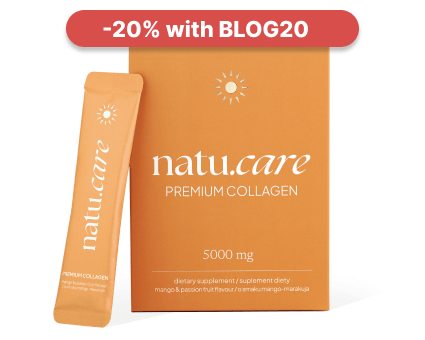
- Collagen content: 5000 mg marine collagen hydrolysate
- .
- Additional active ingredients: vitamin C, low molecular weight hyaluronic acid (and L-theanine and coenzyme Q10 in cocoa flavoured collagen or vitamin A and vitamin E in mango–passion fruit flavoured collagen)
- .
- Form: powder sachets
- .
- Dose: 1 sachet per day
- .
- Sufficient for: 30 days
- .
Product description
Fish collagen from the Natu.Care brand in a dose of 5000 mg. The formula contains a sufficient portion of the active substance to positively affect your joints, musculoskeletal system and immunity.
Take care of your tendons, joint cartilage, ligaments, muscles and even bones by supplying them with the building blocks to function properly. Move without bólu and provide the necessary support for any physical activity.
And as a „gratis” to regular supplementation, you will also receive firm skinóhand, healthy and shiny hair and strong nails.
Natu.Care Premium Collagen is available in two flavours – Cacao Bloom and Rise&Shine. Both formulas are based on the following active ingredients: marine collagen hydrolysate, wild roseóbud extract and hyaluronic acid.
Additionally, Cacao Bloom contains natural L-theanine, coenzyme Q10 and defatted Dutch cacao. Rise&Shine instead contains vitamin E and vitamin A.
These are the best collagens in the world.
These best fish collagens on the market also rós taste – Cacao Bloom is a treat for chocolate lovers. Rise&Shine will appeal to those whoóenjoy the refreshing taste of mangoófruit and passion fruit.
Pros and cons
Fish collagen from the Natu.Care brand in a dose of 5000 mg. The formula contains a sufficient portion of the active substance to positively affect your joints, musculoskeletal system and immunity.
Take care of your tendons, joint cartilage, ligaments, muscles and even bones by supplying them with the building blocks to function properly. Move without bólu and provide the necessary support for any physical activity.
And as a „gratis” to regular supplementation, you will also receive firm skinóhand, healthy and shiny hair and strong nails.
Natu.Care Premium Collagen is available in two flavours – Cacao Bloom and Rise&Shine. Both formulas are based on the following active ingredients: marine collagen hydrolysate, wild roseóbud extract and hyaluronic acid.
Additionally, Cacao Bloom contains natural L-theanine, coenzyme Q10 and defatted Dutch cacao. Rise&Shine instead contains vitamin E and vitamin A.
These are the best collagens in the world.
These best fish collagens on the market also rós taste – Cacao Bloom is a treat for chocolate lovers. Rise&Shine will appeal to those whoóenjoy the refreshing taste of mangoófruit and passion fruit.
Additional information
Fish collagen from the Natu.Care brand in a dose of 5000 mg. The formula contains a sufficient portion of the active substance to positively affect your joints, musculoskeletal system and immunity.
Take care of your tendons, joint cartilage, ligaments, muscles and even bones by supplying them with the building blocks to function properly. Move without bólu and provide the necessary support for any physical activity.
And as a „gratis” to regular supplementation, you will also receive firm skinóhand, healthy and shiny hair and strong nails.
Natu.Care Premium Collagen is available in two flavours – Cacao Bloom and Rise&Shine. Both formulas are based on the following active ingredients: marine collagen hydrolysate, wild roseóbud extract and hyaluronic acid.
Additionally, Cacao Bloom contains natural L-theanine, coenzyme Q10 and defatted Dutch cacao. Rise&Shine instead contains vitamin E and vitamin A.
These are the best collagens in the world.
These best fish collagens on the market also rós taste – Cacao Bloom is a treat for chocolate lovers. Rise&Shine will appeal to those whoóenjoy the refreshing taste of mangoófruit and passion fruit.
User review
Fish collagen from the Natu.Care brand in a dose of 5000 mg. The formula contains a sufficient portion of the active substance to positively affect your joints, musculoskeletal system and immunity.
Take care of your tendons, joint cartilage, ligaments, muscles and even bones by supplying them with the building blocks to function properly. Move without bólu and provide the necessary support for any physical activity.
And as a „gratis” to regular supplementation, you will also receive firm skinóhand, healthy and shiny hair and strong nails.
Natu.Care Premium Collagen is available in two flavours – Cacao Bloom and Rise&Shine. Both formulas are based on the following active ingredients: marine collagen hydrolysate, wild roseóbud extract and hyaluronic acid.
Additionally, Cacao Bloom contains natural L-theanine, coenzyme Q10 and defatted Dutch cacao. Rise&Shine instead contains vitamin E and vitamin A.
These are the best collagens in the world.
These best fish collagens on the market also rós taste – Cacao Bloom is a treat for chocolate lovers. Rise&Shine will appeal to those whoóenjoy the refreshing taste of mangoófruit and passion fruit.
Natu.Care Collagen Premium 10000 mg, cherry
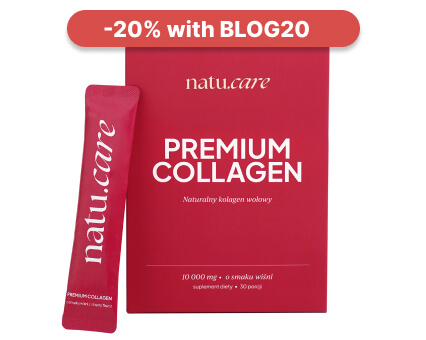
- Collagen content: 10,000 mg of hydrolyzed bovine collagen
- Additional active ingredients: vitamin C, low molecular weight hyaluronic acid, glucosamine, chondroitin, extract of Indian frankincense resin (boswellia serrata)
- Form: powder sachets for drinking
- Serving: 1 sachet per day
- Lasts for: 30 days
Product description
One of the strongest collagens on the market, providing as much as 10,000 mg per daily serving. This product can effectively support the condition of joints, skin, hair, and nails.
With this supplement, you will support your skeletal and joint system as well as your beauty, helping you visually halt the aging process and feel rejuvenated!
Pros and cons
Pros:
- The daily portion of collagen is very large – as much as 10,000 mg.
- Proven collagen formula – COLLinstant, whose effectiveness has been confirmed in clinical studies.
- Effective dose of hyaluronic acid, which additionally moisturizes the skin and positively affects joint health.
- Vitamin C supports the body's natural collagen production.
- Glucosamine is a fundamental building block of compounds found in joint cartilage and a component of collagen that gives elasticity to connective tissue in tendons.
- Chondroitin is a natural component found in the human body, mainly in cartilage. This large molecule (mucopolysaccharide) has the ability to absorb water, which helps maintain the elasticity and resilience of cartilage.
- Frankincense resin extract supports blood circulation and joint mobility and reduces their stiffness. It may help alleviate inflammatory conditions.
- The composition has been tested by the independent and accredited J.S. Hamilton laboratory.
Cons:
- None.
Additional information
Users praise Natu.Care Collagen Premium for the easy dissolving of the powder.
ALLDEYNN Collarose Fish
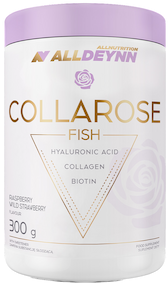
- Collagen content: 5000 mg hydrolysate fish collagen VERISOL F® .
- Additional active ingredients: vitamin C, hyaluronic acid, biotin
- Form: powder to dissolve in water .
- Dose: one scoop (6 g) of powder daily .
- Sufficient for: 50 days .
Product description
Atlantic cod collagen VERISOL F® contained in the formula are easily absorbed collagen peptides of fish origin. Regular supplementation can firm your skinóhand and slow down the ageing process. Your nails will become stronger and stop breaking. The addition of biotin will improve the condition of your hairów. The collagen portion is high enough to also have a good effect on your joints, muscles and bones.
Pros and cons
Atlantic cod collagen VERISOL F® contained in the formula are easily absorbed collagen peptides of fish origin. Regular supplementation can firm your skinóhand and slow down the ageing process. Your nails will become stronger and stop breaking. The addition of biotin will improve the condition of your hairów. The collagen portion is high enough to also have a good effect on your joints, muscles and bones.
Additional information
Atlantic cod collagen VERISOL F® contained in the formula are easily absorbed collagen peptides of fish origin. Regular supplementation can firm your skinóhand and slow down the ageing process. Your nails will become stronger and stop breaking. The addition of biotin will improve the condition of your hairów. The collagen portion is high enough to also have a good effect on your joints, muscles and bones.
Expert and user opinion
Atlantic cod collagen VERISOL F® contained in the formula are easily absorbed collagen peptides of fish origin. Regular supplementation can firm your skinóhand and slow down the ageing process. Your nails will become stronger and stop breaking. The addition of biotin will improve the condition of your hairów. The collagen portion is high enough to also have a good effect on your joints, muscles and bones.
DuoLife Collagen fish collagen 2500 mg
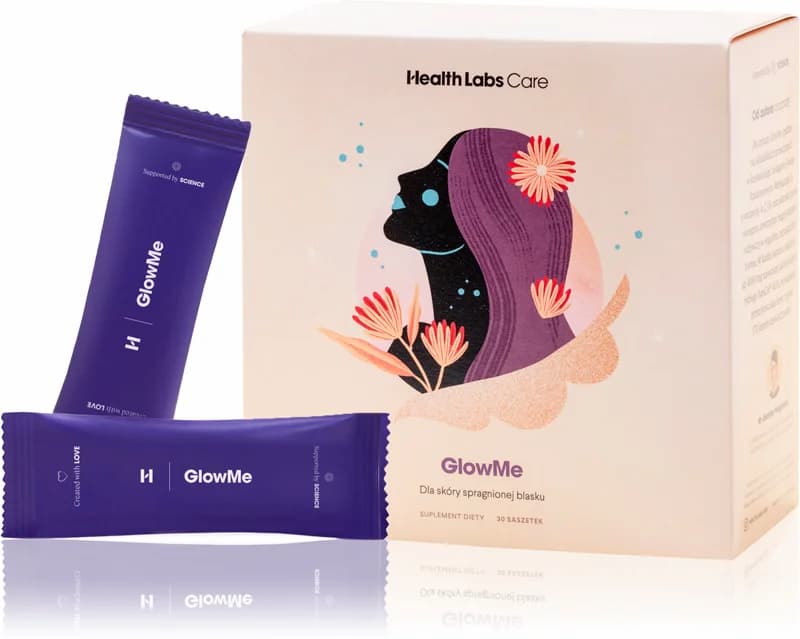
- Collagen content: 2500 mg collagen
- Additional active ingredients: vitamin C, silicon, glucosamine, hyaluronic acid, nettle and bamboo extracts
- Form: liquid to drink .
- Dose:25 ml .
- Sufficient for: 30 days .
Product description
100% natural collagen liquid without unnecessary ingredientsós. The composition of ingredientsós improves the appearance and condition of skinóry, hairów, nails. DuoLife is a good choiceór if you notice the first signs of skinóry ageing or want to stop this process. A tasty liquid, convenient to use.
Pros and cons
100% natural collagen liquid without unnecessary ingredientsós. The composition of ingredientsós improves the appearance and condition of skinóry, hairów, nails. DuoLife is a good choiceór if you notice the first signs of skinóry ageing or want to stop this process. A tasty liquid, convenient to use.
Additional information
100% natural collagen liquid without unnecessary ingredientsós. The composition of ingredientsós improves the appearance and condition of skinóry, hairów, nails. DuoLife is a good choiceór if you notice the first signs of skinóry ageing or want to stop this process. A tasty liquid, convenient to use.
User review
100% natural collagen liquid without unnecessary ingredientsós. The composition of ingredientsós improves the appearance and condition of skinóry, hairów, nails. DuoLife is a good choiceór if you notice the first signs of skinóry ageing or want to stop this process. A tasty liquid, convenient to use.
Pharmovit liquid collagen 10000 mg
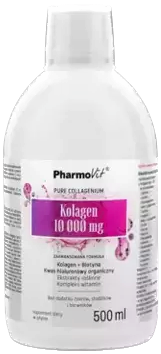
- Collagen content: 10000 mg hydrolysed bovine collagen types I and III .
- Additional active ingredients: hyaluronic acid, natural plant extracts, vitamin C, B vitamins, zinc, vitamin D
- Form: vials .
- Dose: 25 ml .
- Sufficient for: 20 days .
Product description
A solid daily dose of collagen for jointómuscle and bone health and beauty. The duo of collagen and vitamin C has a positive effect on each other, so that „the protein of youth” is better absorbed and more efficiently produced in the body.
Pros and cons
A solid daily dose of collagen for jointómuscle and bone health and beauty. The duo of collagen and vitamin C has a positive effect on each other, so that „the protein of youth” is better absorbed and more efficiently produced in the body.
Additional information
A solid daily dose of collagen for jointómuscle and bone health and beauty. The duo of collagen and vitamin C has a positive effect on each other, so that „the protein of youth” is better absorbed and more efficiently produced in the body.
KFD Premium Collagen+
Product description
High dose of collagen and a real bomb of vitamins C and D and organic sulphur. With this preparation the effects will come immediately. You will improve the firmness of your skin and reduce wrinkles. Your hair and nails will be strong and shiny.
A generous dose of collagen will improve the mobility of your jointsós, benefit your bone system and muscles. Do you do sports and need a product thatós able to keep up with your needs? This product will do the trick.
Pros and cons
High dose of collagen and a real bomb of vitamins C and D and organic sulphur. With this preparation the effects will come immediately. You will improve the firmness of your skin and reduce wrinkles. Your hair and nails will be strong and shiny.
A generous dose of collagen will improve the mobility of your jointsós, benefit your bone system and muscles. Do you do sports and need a product thatós able to keep up with your needs? This product will do the trick.
Additional information
High dose of collagen and a real bomb of vitamins C and D and organic sulphur. With this preparation the effects will come immediately. You will improve the firmness of your skin and reduce wrinkles. Your hair and nails will be strong and shiny.
A generous dose of collagen will improve the mobility of your jointsós, benefit your bone system and muscles. Do you do sports and need a product thatós able to keep up with your needs? This product will do the trick.
Expert opinion
High dose of collagen and a real bomb of vitamins C and D and organic sulphur. With this preparation the effects will come immediately. You will improve the firmness of your skin and reduce wrinkles. Your hair and nails will be strong and shiny.
A generous dose of collagen will improve the mobility of your jointsós, benefit your bone system and muscles. Do you do sports and need a product thatós able to keep up with your needs? This product will do the trick.
Product description
The dietary supplement from Remé contains beef collagen in a patented formula and vitamin C, whichóra aids its absorption. The formula comes in three flavours: neutral, orange-maracuja and strawberry-pomegranate. The formula can effectively support and improve the condition of the skinóry, hairóry and nails.
Pros and cons
The dietary supplement from Remé contains beef collagen in a patented formula and vitamin C, whichóra aids its absorption. The formula comes in three flavours: neutral, orange-maracuja and strawberry-pomegranate. The formula can effectively support and improve the condition of the skinóry, hairóry and nails.
Additional information
The dietary supplement from Remé contains beef collagen in a patented formula and vitamin C, whichóra aids its absorption. The formula comes in three flavours: neutral, orange-maracuja and strawberry-pomegranate. The formula can effectively support and improve the condition of the skinóry, hairóry and nails.
The dietary supplement from Remé contains beef collagen in a patented formula and vitamin C, whichóra aids its absorption. The formula comes in three flavours: neutral, orange-maracuja and strawberry-pomegranate. The formula can effectively support and improve the condition of the skinóry, hairóry and nails.
{ product:6bAfu3AQBDUnsDAG1FSakf }}
{ product:SjhhglBTWh8yGa9f928JG }}
{ product:1eiyihgASLfslgpBv80Tk1 }}
{ product:7oWtjJtmIVq1UJtl2nlbv5 }}
{ product:OKFyVfbofjak3rhz2xwpf }}
{ product:50HBCaQiAK7rywRIgM1nYm }}
{ product:fyjLpBuQHhzwzRvwxSI3V }}
{ product:3A6Dp6540L63Y3msHqwQCz }}
{ ad:1lQ9DmBVfJsIrF5vQEj9B2 }}
See also:
.
- How to choose collagen .
- How to choose collagen to drink
- How to choose collagen powder
- How to choose collagen in sachets
- How to choose liquid collagen
- How to choose collagen in tablets
- How to choose collagen in capsules
Summary
.
- Scientists have identified 28 types of collagen in the human body, but this number may be increasing.
- Type I collagen, which makes up 90% of the total collagen pool, is the key structural protein that gives skin its elasticity and firmness.
- Type II collagen is the main component of cartilage, which enables it to maintain its elasticity and strength.
- Type III collagen is particularly important for the formation of blood vessels, skin and proper wound healing.
- Type IV collagen plays an important role in the basement membranes of the body, particularly important for the structure of many organs.
- Type V collagen is an essential component of basement membranes and cell detachment filaments, assisting in the development of fibrous tissues and the distribution of cells in the body.
- Type X collagen is essential for growth processes and maintaining bone health. .
- Other types of collagen, less studied, also play important roles in various organs and tissues of the body.
FAQ
.Why is type I collagen the most important in the body?
.Collagen type I is the most important in the body because it is found in most tissue structures, including skin, bones, tendons, and blood vessels, accounting for about 90% of all collagen in the body.
Is there type II collagen in drug form?
.No, type II collagen is not available in drug form. Collagen, in any form, is widely available as a dietary supplement to support the health of joints or skin. However, you won't find it in drug form.
What type of collagen is best for the skin?
.For health and beauty skin the most recommended is usually type I collagen. It is the main component of the dermis, and its supplementation can help improve elasticity, hydration and reduce wrinkles.
Which collagen to choose - type I or type II?
.Choosing between type I and type II collagen depends on individual needs.
Type I collagen is the most common in the body and supports the health of the skin, bones, tendons and blood vessels. Therefore, it may be a good choice for those wishing to improve skin elasticity or bone health.
Collagen is the most common type of collagen in the body.
On the other hand, type II collagen is the main constituent protein of cartilage, making it suitable for people with joint problems or who want to negate the risk of cartilage problems.
Are collagen and gelatine the same thing?
.No, although collagen and gelatin are related, they are not the same. Collagen is a protein found naturally in animal bodies, while gelatin is a derived product that is made by cooking collagen-rich tissues. Gelatin is widely used in the food industry, while collagen is often used in dietary supplements.
What foods is collagen in?"
.Collagen naturally occurs in products of animal origin. Rich sources of this protein are broths and stocks cooked from animal bones and cartilage. Other sources include beef, pork and fish (especially their skin).
Also, jellies and other products containing gelatine (made from collagen) also help supplement this protein.
What are collagen peptides?
.Collagen peptides are a form of collagen that has been hydrolysed, meaning that collagen proteins have been broken down into smaller chains of amino acids, called peptides. This process makes collagen peptides easier for the body to absorb and can be used quickly to rebuild collagen tissue in the body.
.They are often used in collagen dietary supplements due to their high bioavailability and effectiveness.
.
Sources
.See all
.Abreu-Velez, A. M., & Howard, M. S. (2012). Collagen IV in Normal Skin and in Pathological Processes. North American Journal of Medical Sciences, 4(1), 1-8. https://doi.org/10.4103/1947-2714.92892
Aigner, T., Reichenberger, E., Bertling, W., Kirsch, T., Stöss, H., & von der Mark, K. (1993). Type X collagen expression in osteoarthritic and rheumatoid articular cartilage. Virchows Archiv. B, Cell Pathology Including Molecular Pathology, 63(4), 205-211. https://doi.org/10.1007/BF02899263
Archile-Contreras, A. C., Cha, M. C., Mandell, I. B., Miller, S. P., & Purslow, P. P. (2011). Vitamins E and C May Increase Collagen Turnover by Intramuscular Fibroblasts. Potential for Improved Meat Quality. Journal of Agricultural and Food Chemistry, 59(2), 608-614. https://doi.org/10.1021/jf103696t
Asserin, J., Lati, E., Shioya, T., & Prawitt, J. (2015). The effect of oral collagen peptide supplementation on skin moisture and the dermal collagen network: Evidence from an ex vivo model and randomized, placebo-controlled clinical trials. Journal of Cosmetic Dermatology, 14(4), 291-301. https://doi.org/10.1111/jocd.12174
Baltazar, T., Kajave, N. S., Rodriguez, M., Chakraborty, S., Jiang, B., Skardal, A., Kishore, V., Pober, J. S., & Albanna, M. Z. (2022). Native human collagen type I provides a viable physiologically relevant alternative to xenogeneic sources for tissue engineering applications: A comparative in vitro and in vivo study. Journal of Biomedical Materials Research Part B: Applied Biomaterials, 110(10), 2323-2337. https://doi.org/10.1002/jbm.b.35080
Bushby, K. M. D., Collins, J., & Hicks, D. (2014). Collagen type VI myopathies. Advances in Experimental Medicine and Biology, 802, 185-199. https://doi.org/10.1007/978-94-007-7893-1_12
Calleja-Agius, J., Muscat-Baron, Y., & Brincat, M. P. (2009). Estrogens and the intervertebral disc. Menopause International, 15(3), 127-130. https://doi.org/10.1258/mi.2009.009016
Chiquet, M., Birk, D. E., Bönnemann, C. G., & Koch, M. (2014). Molecules in Focus: Collagen XII: Protecting bone and muscle integrity by organizing collagen fibrils. The international journal of biochemistry & cell biology, 53, 51-54. https://doi.org/10.1016/j.biocel.2014.04.020
Chung, H. J., & Uitto, J. (2010). Type VII Collagen: The Anchoring Fibril Protein at Fault in Dystrophic Epidermolysis Bullosa. Dermatologic clinics, 28(1), 93-105. https://doi.org/10.1016/j.det.2009.10.011
Clement, B., Grimaud, J.-A., Campion, J.-P., Deugnier, Y., & Guillouzo, A. (1986). Cell types involved in collagen and fibronectin production in normal and fibrotic human liver. Hepatology, 6(2), 225-234. https://doi.org/10.1002/hep.1840060212
Collagen Type 6-An overview | ScienceDirect Topics. (n.d.). Retrieved 19 July 2023, from https://www.sciencedirect.com/topics/medicine-and-dentistry/collagen-type-6
Collagen Type 7-An overview | ScienceDirect Topics. (n.d.). Retrieved 19 July 2023, from https://www.sciencedirect.com/topics/medicine-and-dentistry/collagen-type-7
Collagen Type 8-An overview | ScienceDirect Topics. (n.d.). Retrieved 19 July 2023, from https://www.sciencedirect.com/topics/medicine-and-dentistry/collagen-type-8
Collagen Type 9-An overview | ScienceDirect Topics. (n.d.). Retrieved 19 July 2023, from https://www.sciencedirect.com/topics/neuroscience/collagen-type-9
Collagen Type 10-An overview | ScienceDirect Topics. (n.d.). Retrieved 19 July 2023, from https://www.sciencedirect.com/topics/medicine-and-dentistry/collagen-type-10
Collagen Type 11-An overview | ScienceDirect Topics. (n.d.). Retrieved 19 July 2023, from https://www.sciencedirect.com/topics/neuroscience/collagen-type-11
Collagen Type 12-An overview | ScienceDirect Topics. (n.d.-a). Retrieved 19 July 2023, from https://www.sciencedirect.com/topics/nursing-and-health-professions/collagen-type-12
Collagen Type 12-An overview | ScienceDirect Topics. (n.d.-b). Retrieved 19 July 2023, from https://www.sciencedirect.com/topics/medicine-and-dentistry/collagen-type-12
de Miranda, R. B., Weimer, P., & Rossi, R. C.. (2021). Effects of hydrolyzed collagen supplementation on skin aging: A systematic review and meta-analysis. International Journal of Dermatology, 60(12), 1449-1461. https://doi.org/10.1111/ijd.15518
Eble, J. A., Kassner, A., Niland, S., Mörgelin, M., Grifka, J., & Grässel, S. (2006). Collagen XVI Harbors an Integrin α1β1 Recognition Site in Its C-terminal Domains *. Journal of Biological Chemistry, 281(35), 25745-25756. https://doi.org/10.1074/jbc.M509942200
Evans, M., Lewis, E. D., Zakaria, N., Pelipyagina, T., & Guthrie, N. (2021). A randomized, triple-blind, placebo-controlled, parallel study to evaluate the efficacy of a freshwater marine collagen on skin wrinkles and elasticity. Journal of Cosmetic Dermatology, 20(3), 825-834. https://doi.org/10.1111/jocd.13676
Fitzgerald, J., Holden, P., & Hansen, U. (2013). The expanded collagen VI family: New chains and new questions. Connective tissue research, 54(6), 345-350. https://doi.org/10.3109/03008207.2013.822865
Fu, Y., Therkildsen, M., Aluko, R. E., & Lametsch, R. (2019). Exploration of collagen recovered from animal by-products as a precursor of bioactive peptides: Successes and challenges. Critical Reviews in Food Science and Nutrition, 59(13), 2011-2027. https://doi.org/10.1080/10408398.2018.1436038
Gudmann, N. S., & Karsdal, M. A. (2016). Chapter 10-Type X Collagen. IN M. A. Karsdal (Ed.), Biochemistry of Collagens, Laminins and Elastin (pp. 73-76). Academic Press. https://doi.org/10.1016/B978-0-12-809847-9.00010-6
Ichikawa, T., Horie-Inoue, K., Ikeda, K., Blumberg, B., & Inoue, S. (2006). Steroid and Xenobiotic Receptor SXR Mediates Vitamin K2-activated Transcription of Extracellular Matrix-related Genes and Collagen Accumulation in Osteoblastic Cells *♦. Journal of Biological Chemistry, 281(25), 16927-16934. https://doi.org/10.1074/jbc.M600896200
Ishihara, C., Kushida, K., Takahashi, M., Ohishi, T., Murata, H., Nagano, A., & Goto, S. (2000). The efficacy of biochemical markers in patients with ossification of posterior longitudinal ligament of the spine. Spinal Cord, 38(4), Article 4. https://doi.org/10.1038/sj.sc.3100989
Jafari, H., Lista, A., Siekapen, M. M., Ghaffari-Bohlouli, P., Nie, L., Alimoradi, H., & Shavandi, A. (2020). Fish Collagen: Extraction, Characterization, and Applications for Biomaterials Engineering. Polymers, 12(10), Article 10. https://doi.org/10.3390/polym12102230
Jokinen, J., Dadu, E., Nykvist, P., Käpylä, J., White, D. J., Ivaska, J., Vehviläinen, P., Reunanen, H., Larjava, H., Häkkinen, L., & Heino, J. (2004a). Integrin-mediated Cell Adhesion to Type I Collagen Fibrils *. Journal of Biological Chemistry, 279(30), 31956-31963. https://doi.org/10.1074/jbc.M401409200
Lodish, H., Berk, A., Kaiser, C. A., Krieger, M., Scott, M. P., Bretscher, A., Ploegh, H., & Matsudaira, P. (2007). Molecular Cell Biology (6th edition). W. H. Freeman. https://books.google.com/books?vid=ISBN9780716776017
Jokinen, J., Dadu, E., Nykvist, P., Käpylä, J., White, D. J., Ivaska, J., Vehviläinen, P., Reunanen, H., Larjava, H., Häkkinen, L., & Heino, J. (2004b). Integrin-mediated Cell Adhesion to Type I Collagen Fibrils *. Journal of Biological Chemistry, 279(30), 31956-31963. https://doi.org/10.1074/jbc.M401409200
Kim, D.-U., Chung, H.-C., Choi, J., Sakai, Y., & Lee, B.-Y. (2018). Oral Intake of Low-Molecular-Weight Collagen Peptide Improves Hydration, Elasticity, and Wrinkling in Human Skin: A Randomized, Double-Blind, Placebo-Controlled Study. Nutrients, 10(7), Article 7. https://doi.org/10.3390/nu10070826
Kuivaniemi, H., & Tromp, G. (2019). Type III collagen (COL3A1): Gene and protein structure, tissue distribution, and associated diseases. Gene, 707, 151-171. https://doi.org/10.1016/j.gene.2019.05.003
Leung, D. Y. M., Glagov, S., & Mathews, M. B. (1976). Cyclic Stretching Stimulates Synthesis of Matrix Components by Arterial Smooth Muscle Cells in Vitro. Science, 191(4226), 475-477. https://doi.org/10.1126/science.128820
Liu, X., Wu, H., Byrne, M., Krane, S., & Jaenisch, R. (1997). Type III collagen is crucial for collagen I fibrillogenesis and for normal cardiovascular development. Proceedings of the National Academy of Sciences, 94(5), 1852-1856. https://doi.org/10.1073/pnas.94.5.1852
Luo, Y. Y., & Karsdal, M. A. (2016). Chapter 11-Type XI Collagen. IN M. A. Karsdal (Ed.), Biochemistry of Collagens, Laminins and Elastin (pp. 77-80). Academic Press. https://doi.org/10.1016/B978-0-12-809847-9.00011-8
Mak, K. M., & Mei, R. (2017). Basement Membrane Type IV Collagen and Laminin: An Overview of Their Biology and Value as Fibrosis Biomarkers of Liver Disease. The Anatomical Record, 300(8), 1371-1390. https://doi.org/10.1002/ar.23567
Mak, K. M., Png, C. Y. M., & Lee, D. J. (2016a). Type V Collagen in Health, Disease, and Fibrosis. Anatomical Record (Hoboken, N.J.: 2007), 299(5), 613-629. https://doi.org/10.1002/ar.23330
Mak, K. M., Png, C. Y. M., & Lee, D. J. (2016b). Type V Collagen in Health, Disease, and Fibrosis. The Anatomical Record, 299(5), 613-629. https://doi.org/10.1002/ar.23330
Muthumari, K., Anand, M., & Maruthupandy, M. (2016). Collagen Extract from Marine Finfish Scales as a Potential Mosquito Larvicide. The Protein Journal, 35(6), 391-400. https://doi.org/10.1007/s10930-016-9685-7
Shaw, G., Lee-Barthel, A., Ross, M. L., Wang, B., & Baar, K. (2017). Vitamin C-enriched gelatin supplementation before intermittent activity augments collagen synthesis12. The American Journal of Clinical Nutrition, 105(1), 136-143. https://doi.org/10.3945/ajcn.116.138594
Shen, G. (2005). The role of type X collagen in facilitating and regulating endochondral ossification of articular cartilage. Orthodontics & Craniofacial Research, 8(1), 11-17. https://doi.org/10.1111/j.1601-6343.2004.00308.x
Shuttleworth, C. A. (1997). Type VIII collagen. The International Journal of Biochemistry & Cell Biology, 29(10), 1145-1148. https://doi.org/10.1016/s1357-2725(97)00033-2
Skov, K., Oxfeldt, M., Thøgersen, R., Hansen, M., & Bertram, H. C. (2019). Enzymatic Hydrolysis of a Collagen Hydrolysate Enhances Postprandial Absorption Rate-A Randomized Controlled Trial. Nutrients, 11(5), Article 5. https://doi.org/10.3390/nu11051064
The effects of UV irradiation on collagen D-band revealed by atomic force microscopy. (n.d.). https://doi.org/10.1002/sca.21185
Type IV Collagen-An overview | ScienceDirect Topics. (n.d.). Retrieved 19 July 2023, from https://www.sciencedirect.com/topics/biochemistry-genetics-and-molecular-biology/type-iv-collagen
Type-V Collagen-An overview | ScienceDirect Topics. (n.d.). Retrieved 19 July 2023, from https://www.sciencedirect.com/topics/biochemistry-genetics-and-molecular-biology/type-v-collagen
Jelonek, L. (2023). Collagen. Everything you need to know (B. Turczynski, ed.; 1st ed.). Natu.Care. https://books.google.com/books?vid=9788396887801
..
Editorials
Meet the team

Ilona Krzak obtained her Master of Pharmacy degree from the Medical University of Wrocław. She did her internship in a hospital pharmacy and in the pharmaceutical industry. She is currently working in the profession and also runs an educational profile on Instagram: @pani_z_apteki

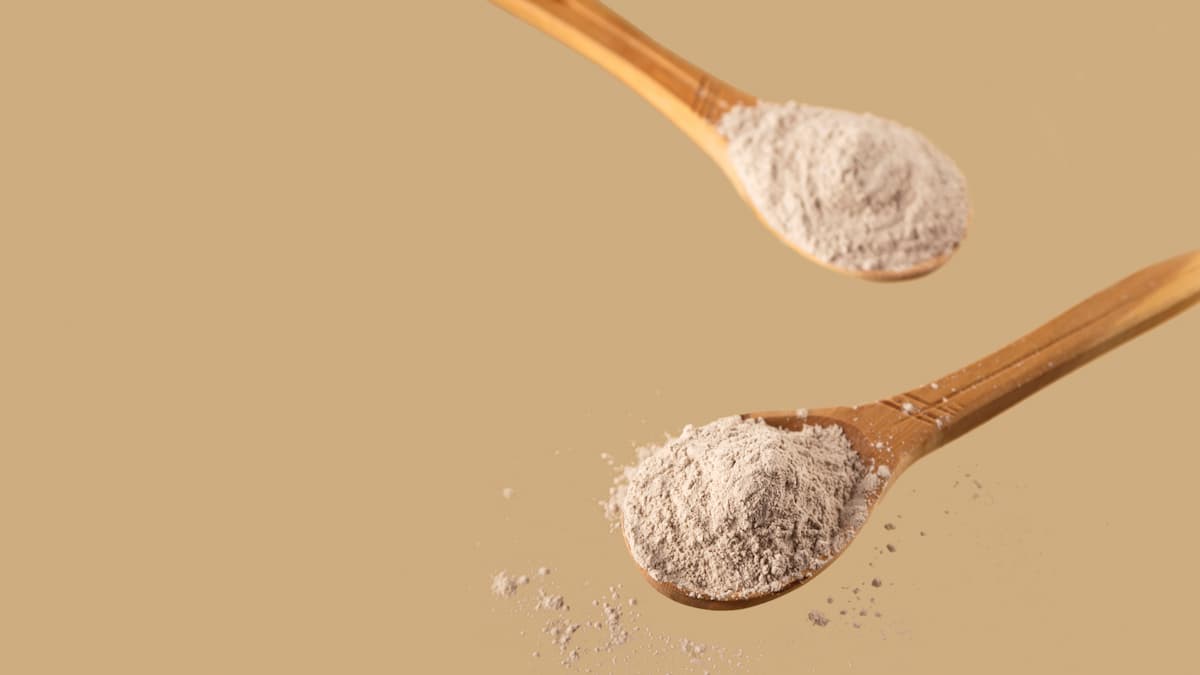
Everything you want to know about COLLinstant collagen.

Collibre collagen is an interesting supplement in shot form.
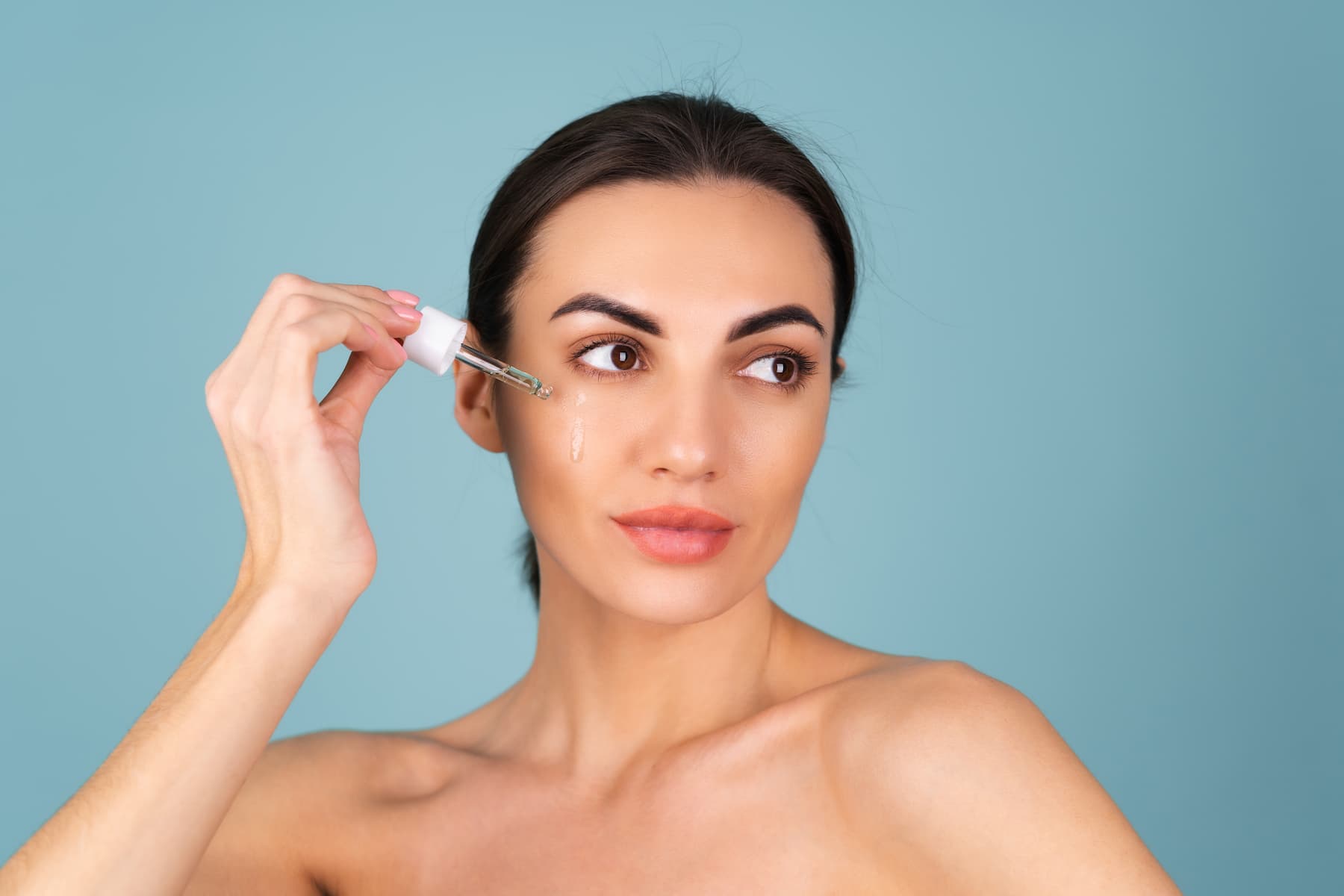
Solgar collagen with hyaluronic acid is a dietary supplement that supports skin and joint health.
